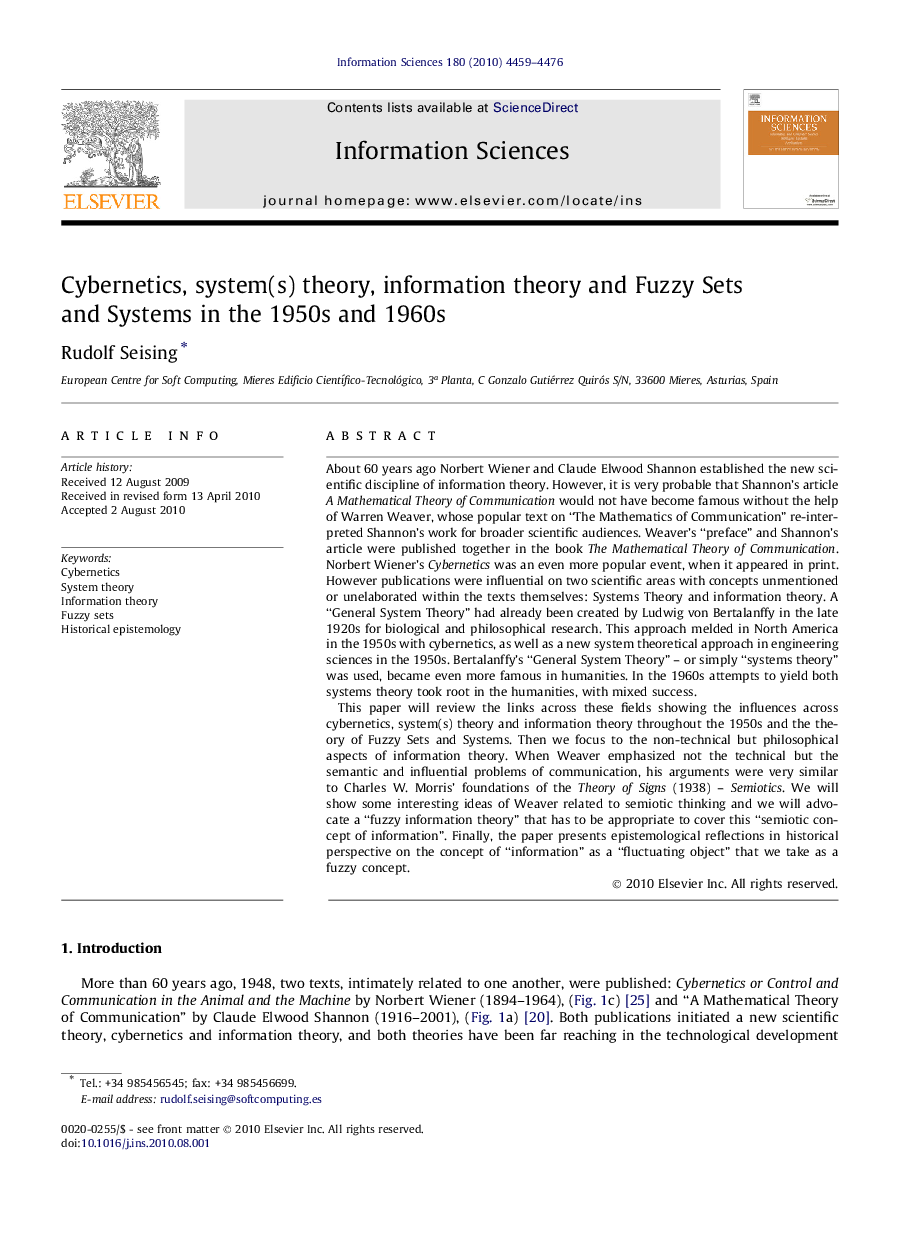| کد مقاله | کد نشریه | سال انتشار | مقاله انگلیسی | نسخه تمام متن |
|---|---|---|---|---|
| 394056 | 665720 | 2010 | 18 صفحه PDF | دانلود رایگان |

About 60 years ago Norbert Wiener and Claude Elwood Shannon established the new scientific discipline of information theory. However, it is very probable that Shannon’s article A Mathematical Theory of Communication would not have become famous without the help of Warren Weaver, whose popular text on “The Mathematics of Communication” re-interpreted Shannon’s work for broader scientific audiences. Weaver’s “preface” and Shannon’s article were published together in the book The Mathematical Theory of Communication. Norbert Wiener’s Cybernetics was an even more popular event, when it appeared in print. However publications were influential on two scientific areas with concepts unmentioned or unelaborated within the texts themselves: Systems Theory and information theory. A “General System Theory” had already been created by Ludwig von Bertalanffy in the late 1920s for biological and philosophical research. This approach melded in North America in the 1950s with cybernetics, as well as a new system theoretical approach in engineering sciences in the 1950s. Bertalanffy’s “General System Theory” – or simply “systems theory” was used, became even more famous in humanities. In the 1960s attempts to yield both systems theory took root in the humanities, with mixed success.This paper will review the links across these fields showing the influences across cybernetics, system(s) theory and information theory throughout the 1950s and the theory of Fuzzy Sets and Systems. Then we focus to the non-technical but philosophical aspects of information theory. When Weaver emphasized not the technical but the semantic and influential problems of communication, his arguments were very similar to Charles W. Morris’ foundations of the Theory of Signs (1938) – Semiotics. We will show some interesting ideas of Weaver related to semiotic thinking and we will advocate a “fuzzy information theory” that has to be appropriate to cover this “semiotic concept of information”. Finally, the paper presents epistemological reflections in historical perspective on the concept of “information” as a “fluctuating object” that we take as a fuzzy concept.
Journal: Information Sciences - Volume 180, Issue 23, 1 December 2010, Pages 4459–4476